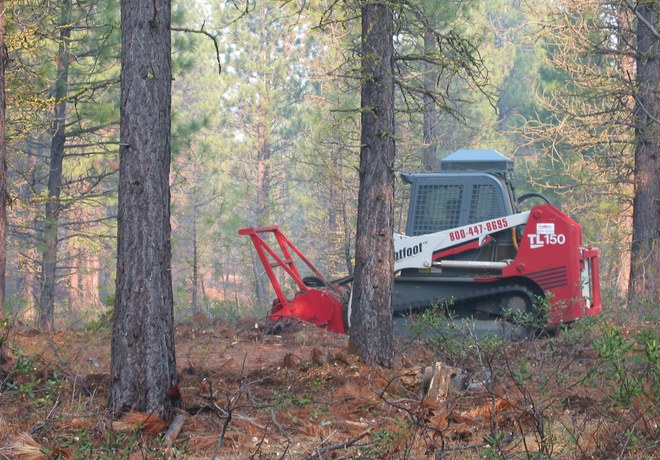The Land Trust is starting a new multi-year forest restoration project at the Metolius Preserve near Camp Sherman this spring that will eventually include the use of prescribed fire.
We have been interested in prescribed burning at the Metolius Preserve for more than a decade, but have been unable to move forward with a burn for a variety of reasons. Thanks to a new collaborative project with the US Forest Service and The Nature Conservancy, we are hoping to bring fire back to the landscape in the next several years to complement our larger forest restoration goals.
The Land Trust's ultimate goal for the forests of the Metolius Preserve is to create a forest that is resilient to the impacts of climate change and provides healthy habitat for native plants and animals. Much of the Preserve was selectively thinned in the last 20 years to create patches of widely spaced trees intermixed with denser clumps of trees and gaps with few trees. The resulting mosaic pattern of "gappy, patchy, and clumpy" mimics nature: forests of mixed-age trees with a variety of habitats for wildlife. When fire was removed from the landscape, these naturally occurring areas disappeared, leaving a more uniform forest. Reintroducing prescribed fire to the Metolius Preserve is one of the next steps in helping maintain and create mosaic patterns for the forest.
Before any prescribed burning takes place, however, we need to prepare the Metolius Preserve. With thinning efforts that last happened a decade ago, there currently aren't safe conditions for a prescribed burn—the fire would burn too hot and have too high of flames. To make the safest conditions possible, the Land Trust will remove hazardous fuel materials from the portions of the Preserve that will have prescribed burns in the coming years. We hope to complete prescribed burns on ~160 acres between two different sections of the Metolius Preserve. To get things ready, we will be mowing the portions that will burn with a large brush cutter. The brush cutter moves through the forest floor and mows shrubs and small-diameter grand firs and then sprays the woody debris onto the forest floor.

In the northern part of the Metolius Preserve, about 50 acres will be mowed. Our goal is to keep ~65% of the shrub layer of the forest—removing mostly manzanita and bitterbrush—with a preference for keeping bitterbrush due to its importance as forage for deer and elk. We will also keep ~5% of the small-diameter grand fir layer, including all the larger diameter grand firs. This portion of the Preserve has limited grand firs, but historically they were even less abundant than they are today.
In the southernmost section of the Metolius Preserve, we will also be removing shrubs like ceanothus and bitterbrush, with the goal of keeping 65% of the shrub layer. Since there are smaller quantities of chinquapin found in the southern section, we plan on leaving these shrubs unless they are next to a tree and could act as a fuel ladder. Chinquapin are critical host plants for the chinquapin hairstreak butterfly. Finally, around the perimeter of all the planned burn areas, we will create a fire break with no shrubs to stop the potential spread of fire.
Will the Metolius Preserve be closed while this work occurs? The Metolius Preserve will remain open to the public during these initial stages of forest restoration work. If you are visiting the Metolius Preserve in late May or early June, you may hear loud sounds and see equipment. It's important to make sure to give any equipment you do see a wide berth and stay aware of your surroundings. (Especially since the mowing machine sprays debris!) Work will occur for approximately two weeks.
Learn more:
- About the Metolius Preserve
- About our forest restoration work at the Metolius Preserve
- East Cascade Dry Forests
- Restoration and Humanism in the Anthropocene


